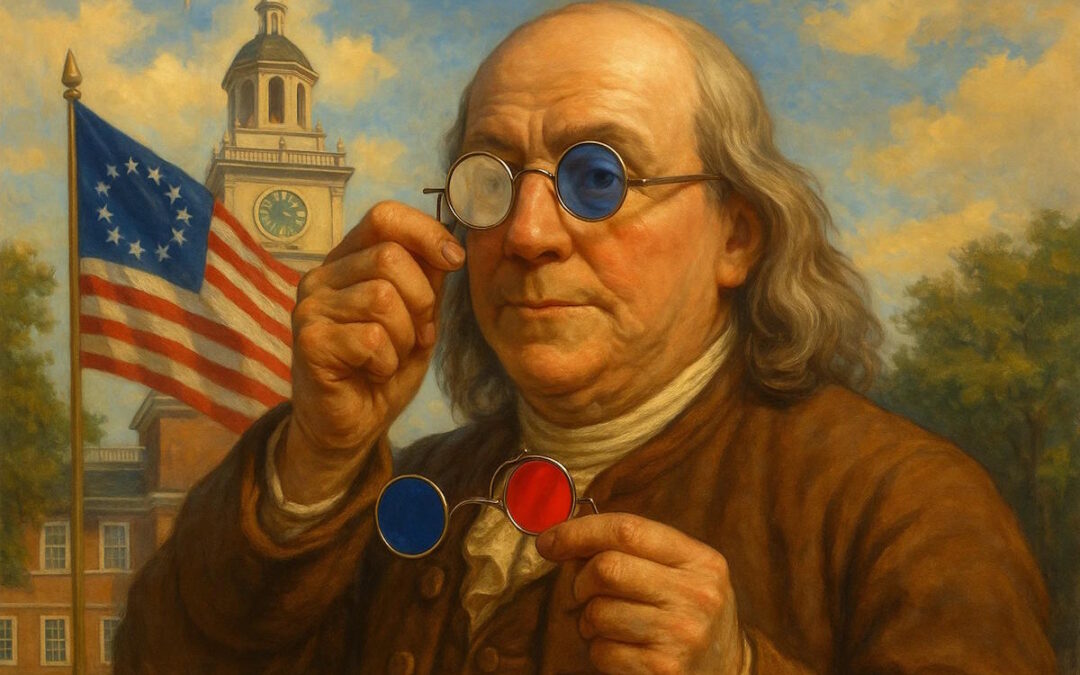Old age didn’t stop Benjamin Franklin. (AI image)
In the movie National Treasure, treasure-seeker Nicholas Cage discovers a pair of antique spectacles with multiple lenses—clearly designed, we’re told, by Benjamin Franklin. When used to peer at the back of the Declaration of Independence, the lenses reveal hidden messages that eventually reveal a vast treasure.
Of course, this is historical fiction. But the detail about the glasses is grounded in truth: Franklin did invent bifocals. More than just a clever gadget, they’re a symbol of what Franklin brought to the birth of our country—wisdom shaped by age and guided by vision.
When Thomas Jefferson was chosen to draft the Declaration of Independence in 1776, Benjamin Franklin—then 70 years old—was selected as one of just five members of the drafting committee. Though he didn’t pen the first draft, his role as an editor and elder statesman was critical. He proposed changes that helped transform the document from a raw protest to a philosophical statement.
For example, Franklin is credited with changing Jefferson’s original phrase, “We hold these truths to be sacred and undeniable,” to the more Enlightenment-inspired “self-evident.” (However, four references to God occur in the document.)
Five years later, fellow founding father John Jay would write of Franklin’s continued contributions during the Revolution:
“The Letters I have received from him bear no Marks of Age, and there is an acuteness & sententious Brevity in them which do not indicate an understanding injured by Years. I have many Reasons to think our Country much indebted to him… His Character is very high here, and I really believe that the Respectability he enjoys throughout Europe has been of general use to our Cause & Country.”
—John Jay to Robert R. Livingston, August 20, 1781
Franklin’s bifocals, then, are more than a relic—they’re a metaphor. His invention allowed the elderly to see clearly both near and far. Likewise, his role in America’s founding was to help the young nation see with greater clarity—both the reality it faced and the ideals it should strive for.
In a time when youth and speed often capture headlines, Franklin reminds us that sometimes the clearest vision comes from those who have lived long enough to understand what truly matters.

